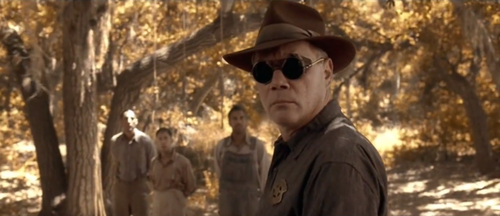Once there was a wolf, who quite egotistically, referred to
himself as “The Big Bad Wolf.” One day this wolf caught the scent of a small
family of pigs who each lived a house of their own design. These three pigs,
Peter, Paul, and Penny, were perfectly content living in their houses made of
straw, sticks, and bricks respectively. The wolf followed his nose to the house
of the first pig, Peter, who resided in a lovely house made of straw. The wolf courteously
knocked on the door and tried to coax the pig out. Peter the pig refused.
Realizing the house was made of a rather frail material, the wolf proclaimed “Come
out now or I’ll totally destroy your house!” And totally destroy the house, he
did. In the destruction, Peter was able to scurry away to his brother’s house
next door. Peter and Paul huddled together and phoned their sister, Penny, who
lived next door. “Get over here, Penny!” The brothers urged. “There’s a wolf
trying to eat us and he totally destroyed Peter’s house!” Penny explained to
her brothers that her house was made of brick, a material that the wolf would
be unable to totally destroy. The brothers, as they always had, insisted that
they knew better and told her that Paul’s house of sticks was so well built
that it was the only safe place. As they said this, the wolf reached the house
of sticks and, smelling not one but two delicious pigs inside, decided to forgo
his previous attempt to persuade the pigs, and opted to simply and totally
destroy the house. This time however, the wolf did not let the pigs slip away and
he hungrily gobbled up the portly pig brothers. Penny, seeing the horror that
had befallen her brothers, quickly locked the door to her house made of bricks
and confidently settled into her chair to read a book. Just as she settled in,
she heard a knocking at her door. Knowing full well that it was the Big Bad
Wolf, she ignored the knocking. The wolf, persistent as he was, pressed a
button beside the door that seemed to be for the doorbell. This button did not
sound the doorbell however, and was instead a home defense measure that Penny
had installed, despite her brothers’ mocking insistence of its futility. This defense
measure, when pressed, fired a .12 gauge shotgun slug from the peephole of the
door that all but decimated the head of the Big Bad Wolf. At the sound of the
shot, Penny opened to door to find the headless body of the Big Bad Wolf.
Satisfied by her wit, yet mournful for her brothers, Penny lived the rest of
her days safely and happily in her quaint brick home.
The End.
Penny the Pig
